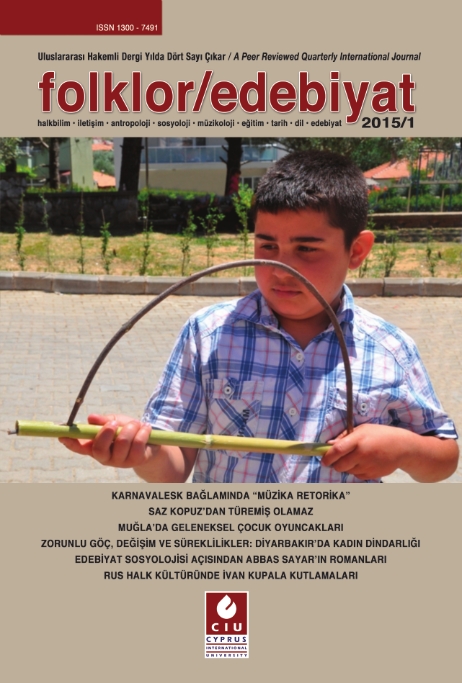Saz Kopuz’dan Türemiş Olamaz
The Saz Was Not Derived From The Kopuz
Author(s): Yıldıray ErdenerSubject(s): Cultural history, Customs / Folklore, Social history, Sociology of Culture, Migration Studies
Published by: Uluslararası Kıbrıs Üniversitesi
Keywords: Saz; Kopuz; Tanbura; Devekopuzu;
Summary/Abstract: There is a common belief in Turkey that the saz was derived from the kopuz. This is very unlikely, because 1000 years before Turks migrated to Anatolia there were two-stringed, fretted instruments which were played with a spectrum. These instruments were widespread in Anatolia and Mesopotamia. Their images appear on stone reliefs that can be seen in museums in Berlin and Paris. A 2008 discovery revealed that the saz and the kopuz were used for hundreds of years in Central Asia. A shepherd in Mongolia found an ancient instrument in a cave that had survived from the fifth century. Mongolian researchers first believed it was a Mongolian folk instrument called the “devekopuzu”. Further research showed that it was a Turkish saz. When Turks came to Anatolia from Central Asia they must have brought the kopuz and the saz with them. Both instruments were in use in Central Asia for 1,500 to 2,000 years. The saz and the kopuz existed side by side in Anatolia for centuries. By the sixteenth century some Anatolian poets noted that the kopuz was gradually disappearing. For example, in one of his poems Ziyai says that the saz is enough and that the kopuz should be taken away. Over time, people began to indicate a preference for the saz because it expressed the feelings of the Turks better than the kopuz.
Journal: Folklor/Edebiyat
- Issue Year: 21/2015
- Issue No: 81
- Page Range: 27-33
- Page Count: 7
- Language: Turkish

